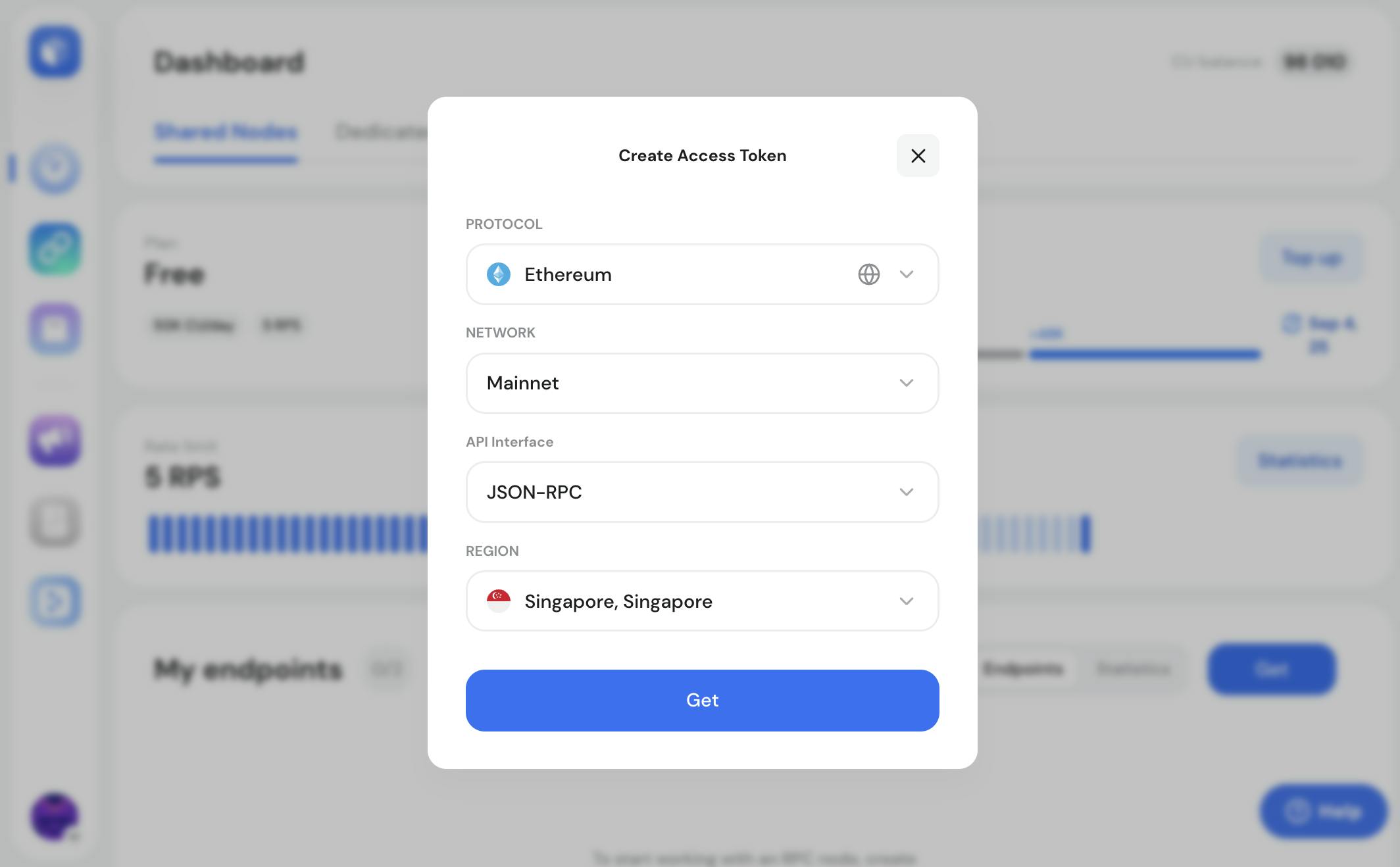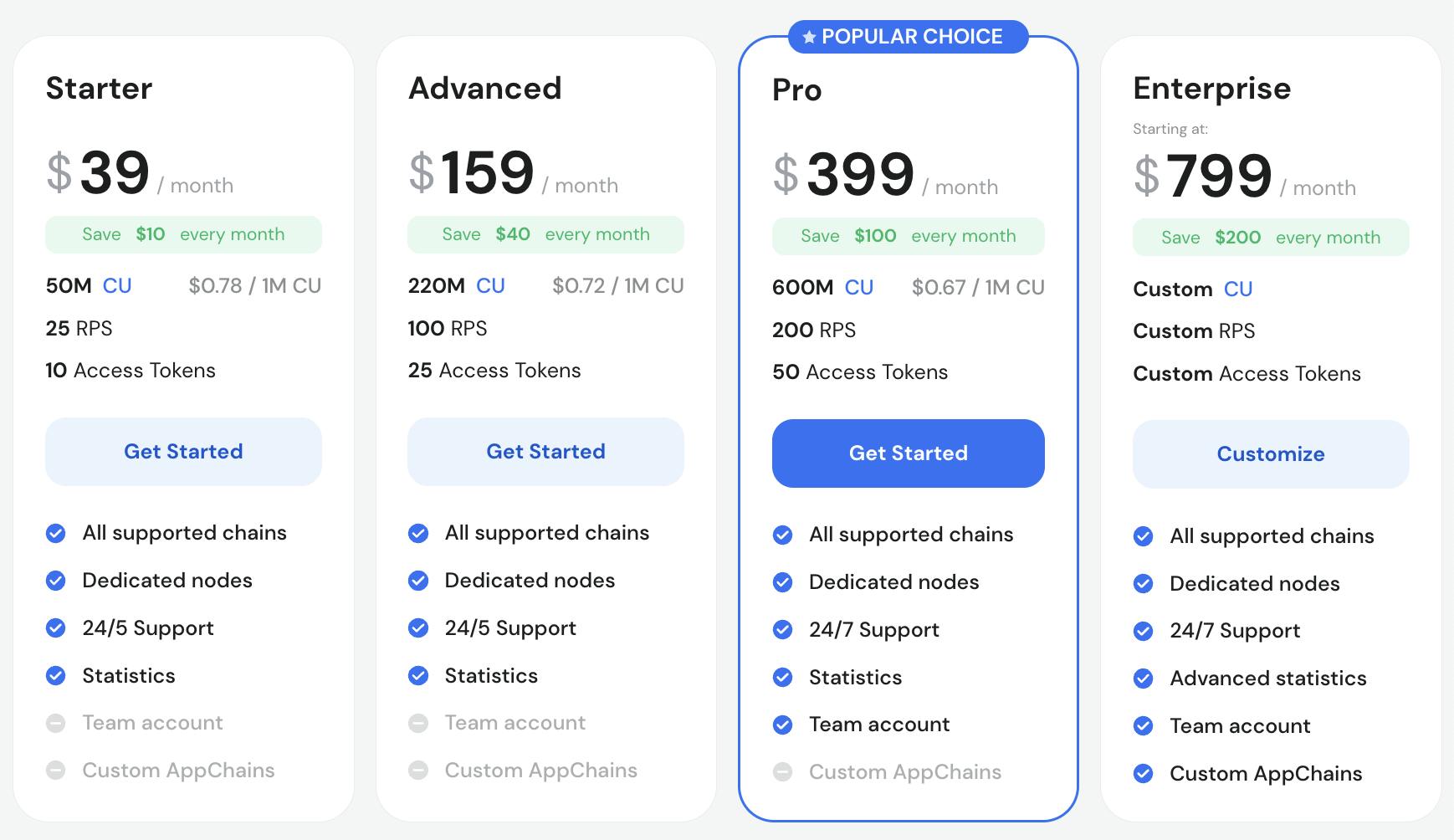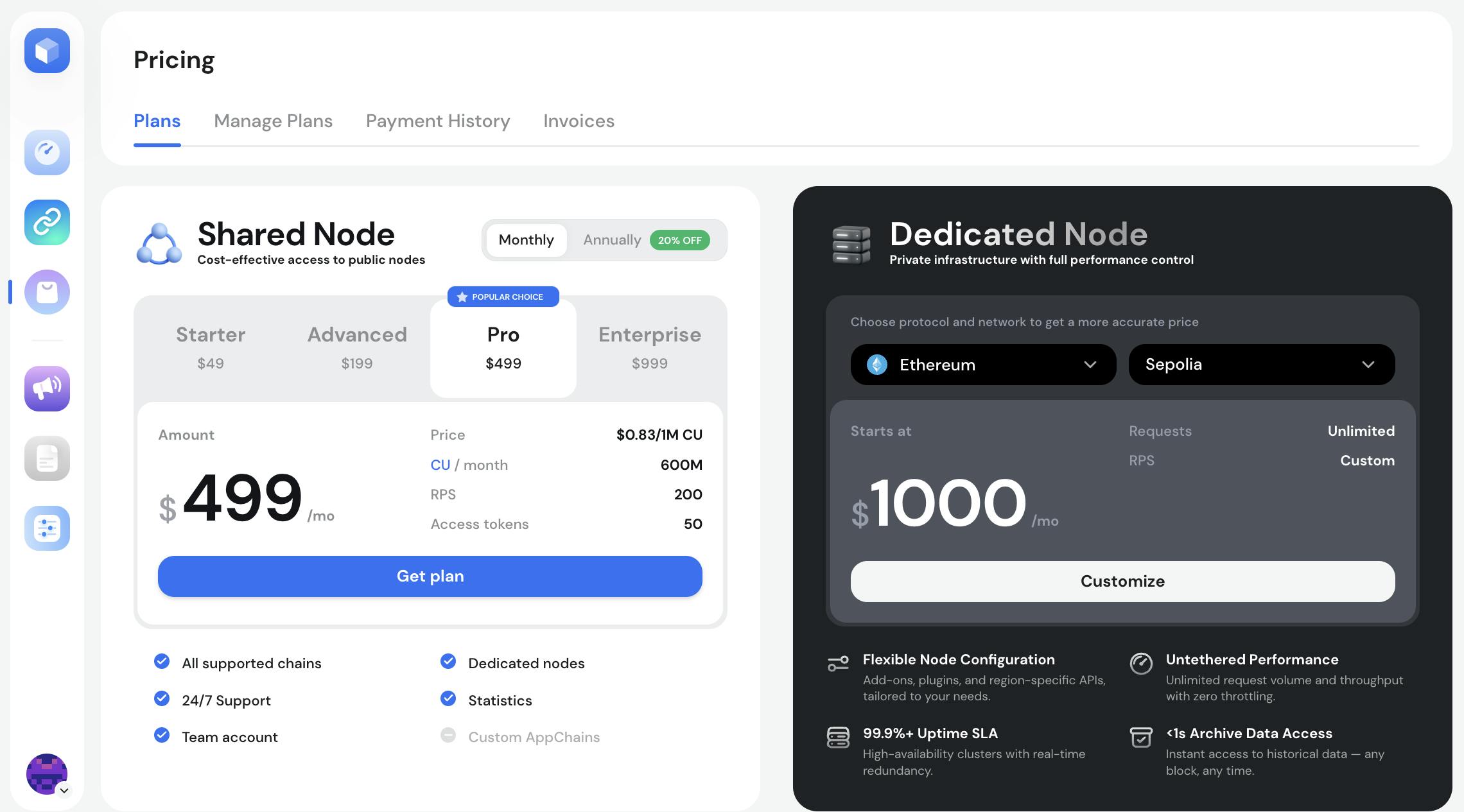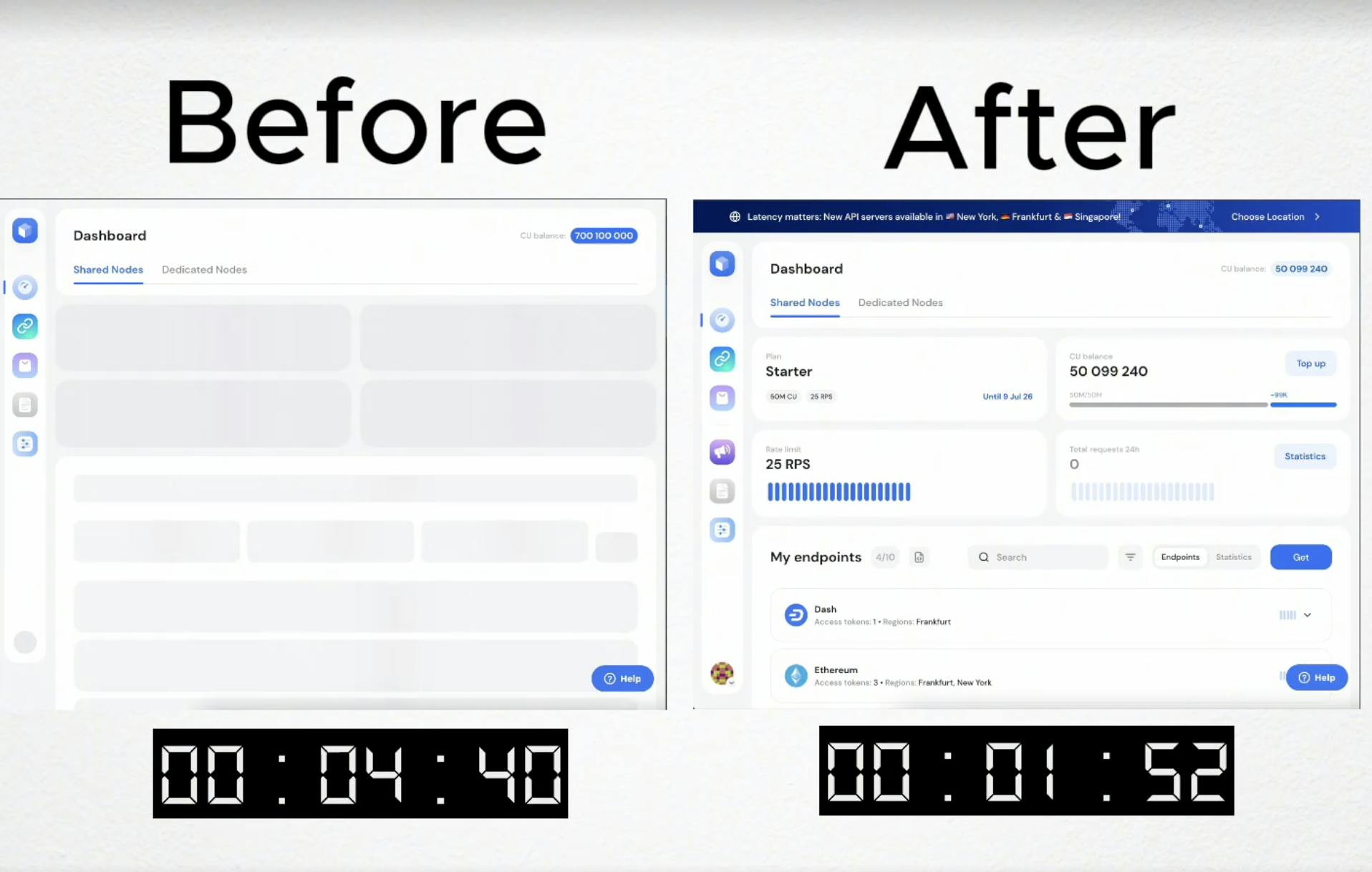GetBlock August 2025 Dev Update: New Plan, Singapore Servers, Smoother UX, New Chains
GETBLOCK
September 9, 2025
11 min read

Hello GetBlockians! Welcome to our monthly Dev Update. August’s release is one of our most significant to date: new product tiers, another region for shared nodes, broader protocol coverage, and UX performance improvements.
We’ve published a Dev Update every month since January – eight consecutive updates so far. Every month we capture what we learned, shipped, and fixed. If you want the full timeline of how GetBlock has changed over time, the Dev Update archive inside our blog is the fastest way to catch up.
TL;DR – August 2025 at a glance
Deployed Shared RPC endpoints to Singapore;
Added a new paid subscription level – Advanced;
Optimized dashboard performance: the account page now loads ~3x faster;
Expanded coverage with 7 new protocols: Abstract, Berachain, Unichain, Mantle, Oasis, Celo, and HyperEVM;
BSC, Ethereum, NEAR, and Bittensor node software updated to newer upstream releases.
Get the full story below.
Expanding our global coverage: Shared RPC endpoints now hosted in Singapore
One of our big goals this year has been to make RPC access truly global. We’ve been rolling this out step by step:
March — we started deploying Dedicated Nodes across EU / US / Asia
July — Shared endpoints added in the US (New York), expanding coverage beyond Europe (Frankfurt)
August — Shared endpoints now also available in Singapore
Bottom line: GetBlock Shared Nodes are now physically hosted in Europe, the US, and Asia, matching the regional coverage we already offered with Dedicated nodes.
The globe icon in the Access Token creation flow is a nice UI cue which means the protocol is hosted in multiple regions.

The Singapore servers initially support the most-requested networks, including but not limited to Ethereum, BNB Smart Chain (BSC), Base, Polygon, TRON, Zora, and Ronin. More chains are being added: check the region selector in the dashboard for the latest availability.
For applications that serve APAC customers, selecting Singapore as the primary endpoint will noticeably reduce latency percentiles since requests are now routed directly to Singapore servers instead of crossing half the world.
Advanced, our new Shared Nodes plan launched
In August, we added an Advanced tier for Shared Nodes. This is a new paid subscription level between our Starter plan and the much more powerful Pro plan.
Why it matters: it closes a real gap we saw in usage. Before, our customers often had to jump straight from Starter to Pro, which is a big leap in both resources and cost. Advanced makes the scaling path smoother.
It offers 220M CU (vs Starter’s 50M), higher RPS, and more access tokens for a modest price increase – enough for most growing apps to avoid hitting rate limits that would otherwise force a Pro upgrade.

You can compare Advanced with the other plans on our refreshed pricing page or directly from your GetBlock account.
Once you’re there, you’ll notice we gave the Pricing tab a glow-up.
Shared Node plans are now interactive cards you can tap to expand into a detailed view.
Key numbers are front and center, no more squinting at checkmarks.
Dedicated Nodes live in their own panel, where you choose a protocol and see deployment pricing up front.
It’s prettier, tidier, and yes — the GetBlock team voted it our slickest layout yet!

If you’d like a personal run-through of our plans for your workload, ping our Sales team from the dashboard, and we’ll help you choose the right fit.
Snappier UI: How we cut load times by ~70%
We significantly optimized page loading for the GetBlock dashboard. The experience is noticeably snappier – the main screen renders faster and feels more interactive during first paint.

What we changed:
Parallelized critical data requests so essential content loads together instead of waiting on sequential calls.
Removed duplicated network requests and unnecessary upfront fetches.
Deferred non-critical data (non-urgent notifications, etc.) to background loads or lazy fetches so the UI becomes usable immediately.
Introduced skeleton loaders while background requests are complete, so the page is interactive earlier.
Together, these fixes result in roughly a 70% reduction in load time. What you’ll notice is shorter wait times, faster first interaction, and smoother navigation.
New protocols: 7 blockchains added
August was a big month for coverage. GetBlock added support for several popular protocols and new ecosystems shaping the next wave of Web3.
Abstract: A next-generation Ethereum L2 that hides blockchain complexity so dApps feel fast and simple to use
Berachain: DeFi‑first Layer‑1 that rewards liquidity and aligns users with on‑chain economics
Celo: Mobile‑friendly payments blockchain built to put crypto in everyone’s pocket
HyperEVM: An EVM-style execution environment within the Hyperliquid architecture
Mantle: A modular L2 that pairs rollups with scalable data availability for cheaper transactions
Oasis Sapphire: Oasis Network’s Sapphire ParaTime where confidential compute meets smart contracts
Unichain: DeFi‑oriented L2 built by Uniswap focused on ultra‑fast finality and liquidity flows
These networks are available right now in the GetBlock dashboard. We’ll follow up with a dedicated announcement for each integration with setup details, so check the blog for updates.
Node client updates (BSC, Ethereum, NEAR, Bittensor)
We keep node clients up to date for security, protocol compatibility, and performance. Here’s a short note on high-impact upgrades we performed in August:
BSC (bnb-chain v1.5.19): A hotfix release that addresses a performance issue introduced in v1.5.18 affecting nodes running with certain pruning flags. The upgrade fixes edge-case stalls and keeps BSC endpoints stable under load.
Ethereum (go-ethereum v1.16.2): Implements client-side support for upcoming Fusaka-related EIPs, plus a set of optimizations and bug fixes. Upgrading keeps our Ethereum-family nodes and Geth-based derivatives compatible with protocol changes and improves performance.
NEAR (nearcore 2.7.0): A database upgrade including a change to the shard layout (increase in shard count). The upgrade will keep NEAR nodes compatible with mainnet rules and support NEAR-based apps that depend on the new sharding layout and performance characteristics.
Bittensor (subtensor v3.2.4): Applied to pick up important fixes including fee handling tweaks, concurrency and workflow fixes, and transaction handling improvements.
These upgrades are primarily about stability, protocol compatibility, performance fixes and critical hotfix adoption – exactly the sort of maintenance that keeps our RPC endpoints reliable.
As always, your feedback matters
Thanks for building with GetBlock! We’re shipping a lot but carefully, and we truly appreciate the feedback and feature requests you send our way. August was full of progress, and from here, the only way is up.
Onward & upward,
The GetBlock team
Popular Posts
June 9, 2021
4 min read
November 9, 2021
5 min read
May 24, 2022
5 min read
March 18, 2021
4 min read